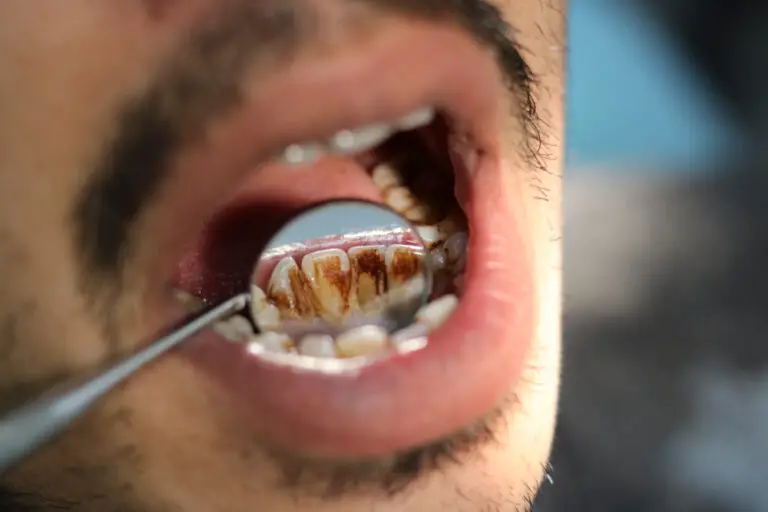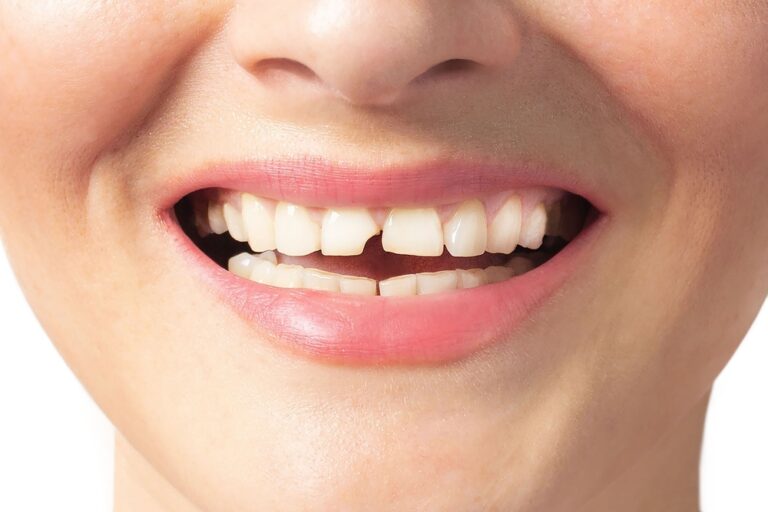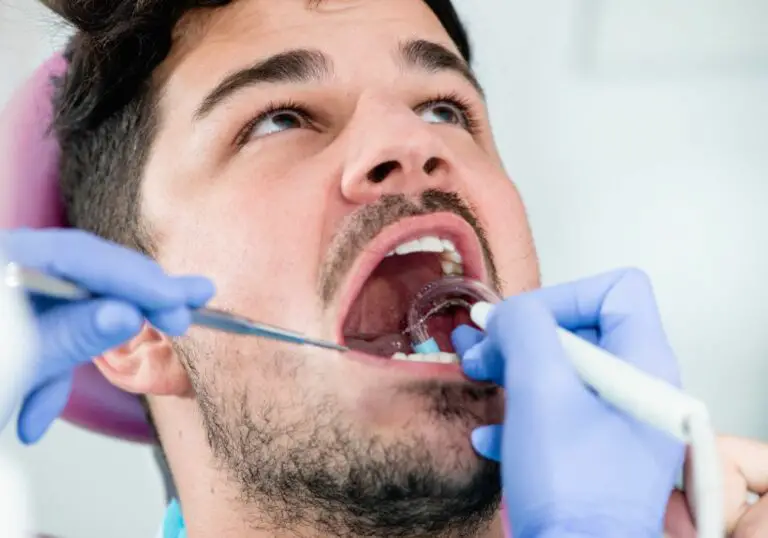If you’ve been living with yellow teeth for years, you may be wondering if it’s possible to whiten them. The good news is that you can! There are many ways to whiten teeth that have been yellow for a long time, from over-the-counter products to professional treatments.
First, it’s important to understand why your teeth are yellow in the first place. Yellowing can occur due to a variety of factors, including aging, genetics, smoking, and drinking coffee or tea. In some cases, certain medications or medical conditions can also cause teeth to yellow. Understanding the cause of your yellow teeth can help you choose the best whitening method for your needs.
When it comes to whitening yellow teeth, there are many options available. Over-the-counter whitening products like toothpaste, strips, and gels can be effective for mild to moderate staining. For more severe yellowing, professional treatments like in-office whitening or take-home trays may be necessary. No matter what method you choose, it’s important to follow the instructions carefully and be patient, as it may take several weeks to see results.
Understanding Tooth Discoloration
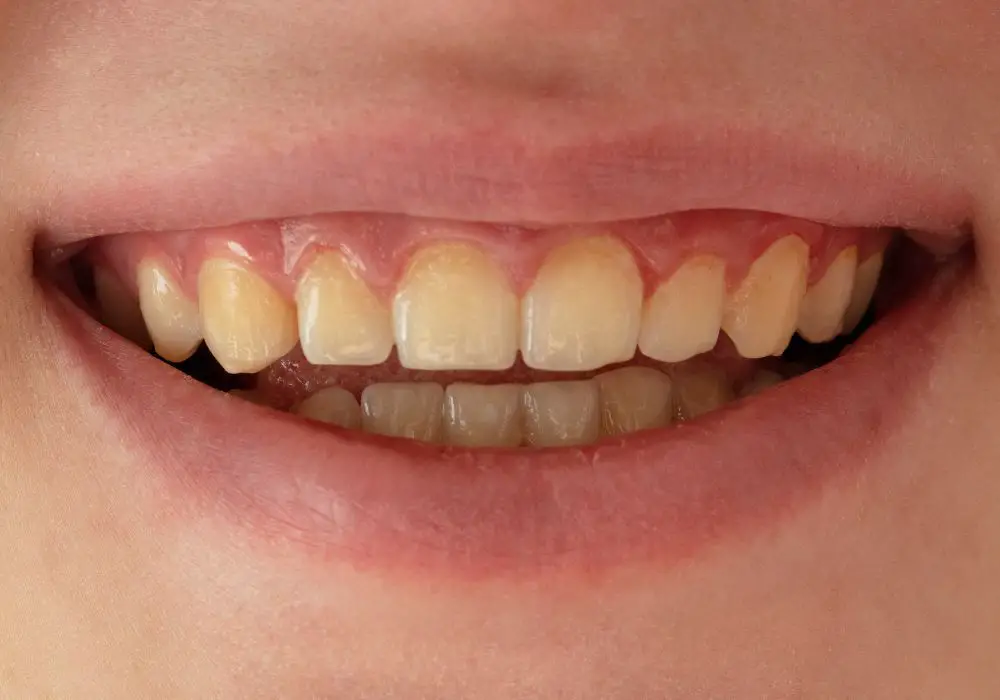
Yellow teeth can be a source of self-consciousness for many people. Understanding the causes of tooth discoloration can help you take steps to prevent it or treat it effectively.
There are two main types of tooth discoloration: extrinsic and intrinsic. Extrinsic discoloration occurs on the outer layer of the tooth, while intrinsic discoloration occurs within the tooth itself.
Extrinsic discoloration is often caused by external factors such as:
- Foods and drinks: Coffee, tea, red wine, and certain fruits and vegetables can all stain your teeth.
- Tobacco use: Smoking or chewing tobacco can cause yellowing of the teeth.
- Poor oral hygiene: Not brushing and flossing regularly can lead to a buildup of plaque and tartar, which can cause discoloration.
Intrinsic discoloration is often caused by internal factors such as:
- Aging: As you age, the outer layer of enamel on your teeth wears away, revealing the yellowish dentin underneath.
- Trauma: A blow to the mouth can damage the inner structure of the tooth, causing discoloration.
- Medications: Certain medications, such as tetracycline, can cause intrinsic discoloration.
It’s important to note that some people are simply born with naturally yellow or grayish teeth. In these cases, tooth whitening treatments may not be effective.
In the next section, we’ll explore some of the treatments available for tooth discoloration.
Causes of Yellow Teeth
Yellow teeth can be caused by a variety of factors, including:
- Foods and drinks: Certain foods and drinks, such as coffee, tea, red wine, and soda, can stain your teeth over time. Acidic foods like citrus fruits and tomatoes can also contribute to discoloration by eroding your tooth enamel.
- Tobacco use: Smoking or using other tobacco products can cause yellowing of your teeth due to the tar and nicotine in tobacco.
- Aging: As you age, your tooth enamel naturally wears down, revealing the yellowish dentin layer underneath.
- Genetics: Some people are born with naturally yellow or thin tooth enamel, making them more prone to discoloration.
- Medications: Certain medications, such as tetracycline and doxycycline, can cause yellowing of your teeth if taken during childhood when your teeth are still developing.
- Poor oral hygiene: Inadequate brushing and flossing can lead to a buildup of plaque and tartar on your teeth, which can cause them to appear yellow.
Overall, yellow teeth are a common problem that can be caused by a variety of factors. Understanding what causes yellow teeth can help you take steps to prevent or treat discoloration.
Can Yellow Teeth Be Whitened?
Yes, yellow teeth can be whitened. There are several ways to whiten yellow teeth, including professional teeth whitening, at-home teeth whitening kits, and natural remedies.
Professional Teeth Whitening
Professional teeth whitening is a popular option for those looking to whiten their teeth quickly and effectively. This procedure is usually done at a dental office and involves the use of a special light or laser to activate a whitening gel applied to your teeth. The whitening gel typically contains hydrogen peroxide or carbamide peroxide, which breaks down the stains on your teeth and whitens them.
At-Home Teeth Whitening Kits
At-home teeth whitening kits are another option for whitening yellow teeth. These kits usually contain a whitening gel that is applied to your teeth using a tray or strip. The whitening gel in these kits also contains hydrogen peroxide or carbamide peroxide. While at-home teeth whitening kits are not as effective as professional teeth whitening, they can still produce noticeable results.
Natural Remedies
If you prefer a more natural approach to teeth whitening, there are several home remedies that you can try. These include:
- Baking soda: Brushing your teeth with baking soda can help remove surface stains and whiten your teeth.
- Hydrogen peroxide: Swishing hydrogen peroxide around in your mouth can help whiten your teeth. Be sure to dilute it with water first.
- Apple cider vinegar: Brushing your teeth with apple cider vinegar can help remove stains and whiten your teeth. Be sure to rinse your mouth thoroughly afterward.
It’s important to note that while natural remedies can be effective, they may take longer to produce results and may not be as effective as professional teeth whitening or at-home teeth whitening kits.
In conclusion, yellow teeth can be whitened through various methods, including professional teeth whitening, at-home teeth whitening kits, and natural remedies. Choose the method that works best for you and consult with your dentist before trying any new teeth whitening products or remedies.
Professional Teeth Whitening Methods
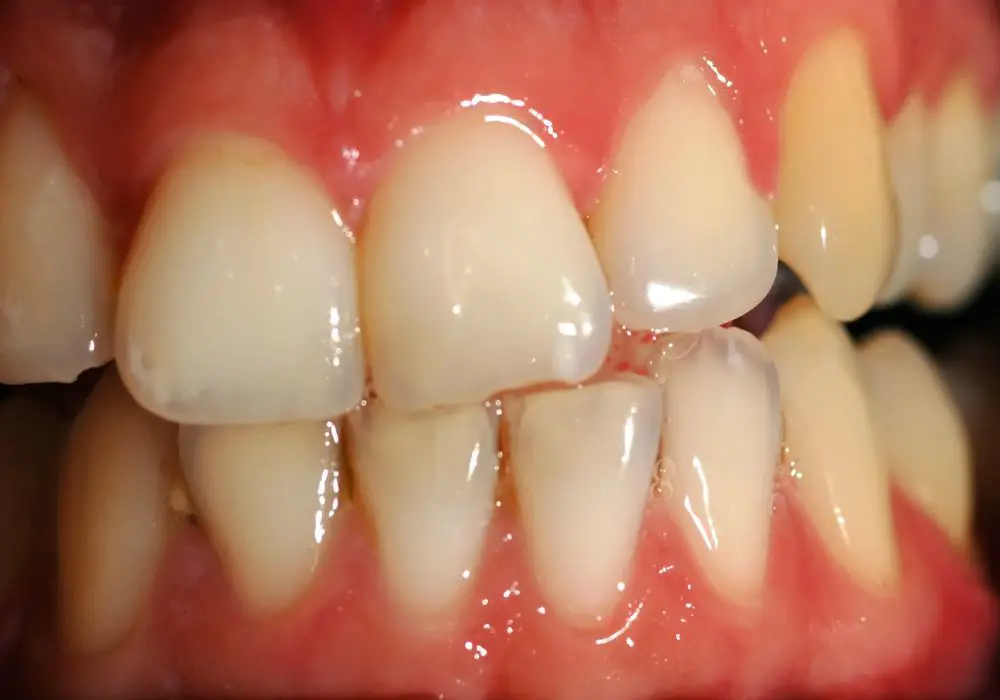
If you want to whiten teeth that have been yellow for years, professional teeth whitening methods can be a good option. There are two main types of professional teeth whitening methods: in-office bleaching and at-home bleaching kits.
In-Office Bleaching
In-office bleaching is a procedure that is done by a dentist. During the procedure, a bleaching agent is applied to your teeth, and a special light or laser is used to activate the bleaching agent. This helps to whiten your teeth quickly and effectively.
In-office bleaching is a good option if you want to see results quickly. The procedure usually takes about an hour, and you can see results right away. However, in-office bleaching can be expensive, and it may not be covered by your dental insurance.
At-Home Bleaching Kits
At-home bleaching kits are another option for professional teeth whitening. These kits usually include a bleaching gel and custom-fitted trays that you wear on your teeth. You apply the gel to the trays and wear them for a certain amount of time each day.
At-home bleaching kits can be a good option if you want to whiten your teeth gradually over time. They are also usually less expensive than in-office bleaching. However, it can take several weeks to see results with at-home bleaching kits.
It’s important to note that not all at-home bleaching kits are created equal. Some may be less effective than others, or they may cause sensitivity or other side effects. It’s important to talk to your dentist before using any at-home bleaching kit to make sure it’s safe and effective for you.
Overall, professional teeth whitening methods can be a good option if you want to whiten teeth that have been yellow for years. In-office bleaching can provide quick results, while at-home bleaching kits can whiten your teeth gradually over time. Talk to your dentist to determine which option is best for you.
Natural Teeth Whitening Methods
If you’re looking for a natural way to whiten your teeth that have been yellow for years, there are several methods that you can try. Here are three natural teeth whitening methods that you can use at home:
Oil Pulling
Oil pulling is an ancient Ayurvedic practice that involves swishing oil around in your mouth to remove toxins and bacteria. Coconut oil is a popular choice for oil pulling because it has antimicrobial properties and can help remove stains from your teeth.
To try oil pulling, follow these steps:
- Put one tablespoon of coconut oil in your mouth.
- Swish the oil around in your mouth for 15-20 minutes.
- Spit the oil out into the trash (not the sink, as it can clog your pipes).
- Rinse your mouth with water and brush your teeth as usual.
Baking Soda and Hydrogen Peroxide
Baking soda and hydrogen peroxide are two common household ingredients that can be used to whiten teeth. Baking soda is a mild abrasive that can remove surface stains, while hydrogen peroxide is a bleaching agent that can lighten the color of your teeth.
To make a baking soda and hydrogen peroxide paste, follow these steps:
- Mix one tablespoon of baking soda with two tablespoons of hydrogen peroxide.
- Brush your teeth with the paste for two minutes.
- Spit the paste out and rinse your mouth with water.
Note that using this method too frequently can damage your tooth enamel, so it’s best to use it no more than once a week.
Apple Cider Vinegar
Apple cider vinegar is another natural ingredient that can help whiten teeth. It contains acetic acid, which can remove surface stains and kill bacteria in your mouth.
To use apple cider vinegar for teeth whitening, follow these steps:
- Dilute the apple cider vinegar with water in a 1:2 ratio.
- Swish the mixture around in your mouth for two minutes.
- Spit the mixture out and rinse your mouth with water.
Note that apple cider vinegar is acidic and can erode your tooth enamel if used too frequently, so it’s best to use it no more than once a week.
Overall, these natural teeth whitening methods can be effective in removing surface stains and lightening the color of your teeth. However, it’s important to use them in moderation and not to expect dramatic results overnight.
Prevention of Further Yellowing
If you want to prevent your teeth from yellowing further, there are a few things you can do. Here are some tips to help you maintain a brighter smile:
Proper Oral Hygiene
One of the most important things you can do to prevent further yellowing of your teeth is to practice proper oral hygiene. This includes brushing your teeth twice a day with a fluoride toothpaste and flossing daily. It is also important to visit your dentist regularly for cleanings and checkups. Regular dental cleanings can remove surface stains and prevent the buildup of tartar, which can cause your teeth to appear yellow.
Dietary Changes
Your diet can also play a role in the color of your teeth. Certain foods and drinks can stain your teeth over time, so it is important to be mindful of what you eat and drink. Some foods and drinks that can cause staining include coffee, tea, red wine, and dark-colored fruits and vegetables. If you do consume these foods and drinks, try to rinse your mouth with water afterwards or brush your teeth as soon as possible. This can help prevent the stains from setting in.
On the other hand, there are also some foods that can help keep your teeth white. For example, crunchy fruits and vegetables like apples and carrots can help scrub away surface stains. Dairy products like milk and cheese can also help neutralize acids in your mouth and strengthen your teeth.
By practicing good oral hygiene and making some dietary changes, you can help prevent your teeth from yellowing further. However, if you have deep stains or discoloration that has been present for years, you may need to consider professional teeth whitening treatments to achieve a brighter smile.
Possible Risks and Side Effects of Teeth Whitening
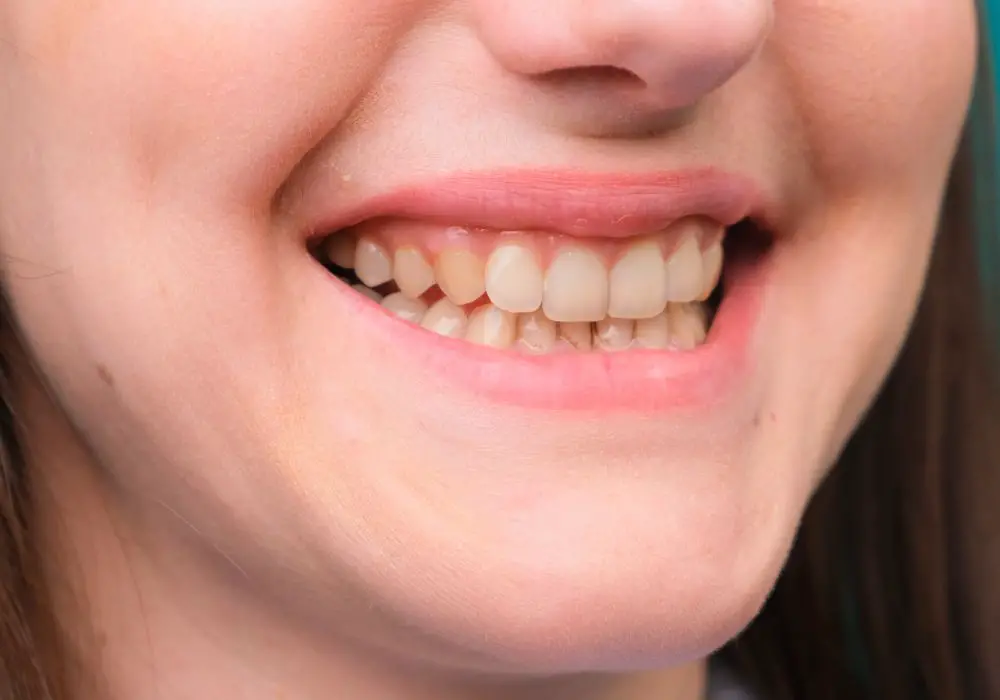
Teeth whitening is a common cosmetic dental procedure that can help you achieve a brighter and more confident smile. However, like any dental treatment, it is important to be aware of the possible risks and side effects before deciding to undergo the procedure.
Sensitivity
One of the most common side effects of teeth whitening is sensitivity. This occurs when the whitening agent penetrates the porous enamel of your teeth and reaches the nerves inside. You may experience a temporary sensitivity to hot and cold temperatures, as well as sweet and acidic foods. This sensitivity usually subsides within a few days, but in some cases, it may last longer.
To minimize sensitivity, it is important to follow the instructions provided by your dentist or the manufacturer of the whitening product. Avoid overusing the whitening agent and use a toothpaste designed for sensitive teeth.
Gum Irritation
Another possible side effect of teeth whitening is gum irritation. This can occur when the whitening agent comes into contact with your gums, causing inflammation and discomfort. Symptoms may include redness, swelling, and bleeding.
To prevent gum irritation, it is important to apply the whitening agent carefully and avoid getting it on your gums. If you do experience gum irritation, rinse your mouth with warm salt water and apply a topical numbing gel.
Uneven Results
In some cases, teeth whitening may result in uneven or blotchy results. This can occur if the whitening agent is not applied evenly or if there are underlying dental issues, such as cavities or gum disease.
To minimize the risk of uneven results, it is important to have your teeth examined by a dentist before undergoing the procedure. Your dentist can identify any underlying dental issues and recommend the best course of treatment.
Conclusion
Teeth whitening can be a safe and effective way to improve the appearance of your smile. However, it is important to be aware of the possible risks and side effects before deciding to undergo the procedure. By following the instructions provided by your dentist or the manufacturer of the whitening product, you can minimize the risk of sensitivity, gum irritation, and uneven results.
Frequently Asked Questions
Is it possible to whiten teeth that have been yellow for years?
Yes, it is possible to whiten teeth that have been yellow for years. However, the process might take longer than whitening relatively new yellow teeth. You may need to use a more potent whitening agent or undergo professional teeth whitening.
How can I whiten my teeth naturally?
Some natural remedies that can help whiten your teeth include using baking soda, hydrogen peroxide, activated charcoal, and apple cider vinegar. However, you should be careful when using these remedies, as they can damage your teeth if used excessively or incorrectly.
What is the best way to whiten teeth that have turned yellow suddenly?
If your teeth have turned yellow suddenly, you should visit a dentist to determine the cause of the discoloration. Once the cause is identified, your dentist will recommend the best treatment option. Some common causes of sudden yellowing of teeth include certain medications, trauma, and poor oral hygiene.
Can genetic yellow teeth be whitened?
Yes, genetic yellow teeth can be whitened. However, the process may take longer and require more potent whitening agents than whitening teeth that have turned yellow due to external factors like smoking or drinking coffee.
Is it too late to fix yellow teeth?
It is never too late to fix yellow teeth. However, the longer you wait, the more difficult it may be to whiten your teeth. Therefore, it is essential to start the whitening process as soon as you notice your teeth turning yellow.
What are the best teeth whitening options near me?
The best teeth whitening options near you depend on your specific needs and preferences. Some common options include in-office professional teeth whitening, at-home whitening kits, and natural remedies. It is best to consult with a dentist to determine the best option for you.

